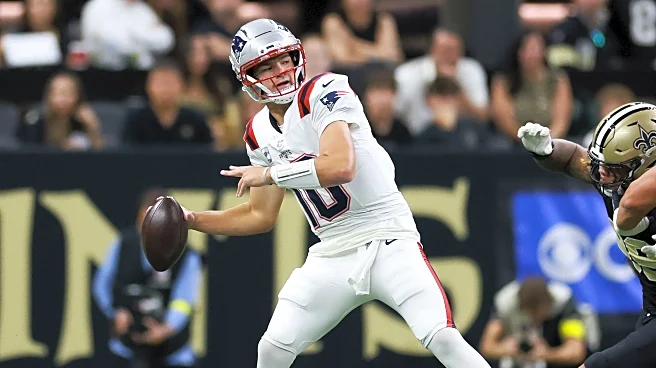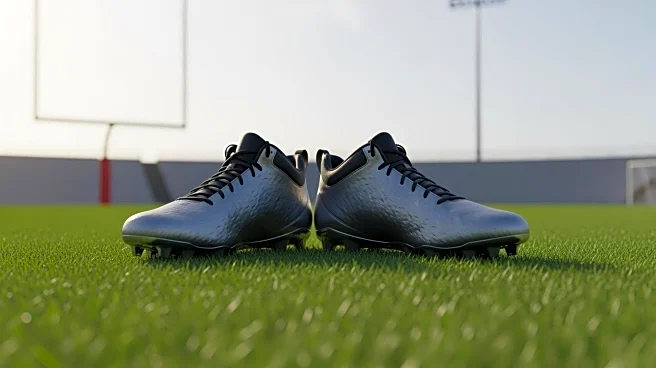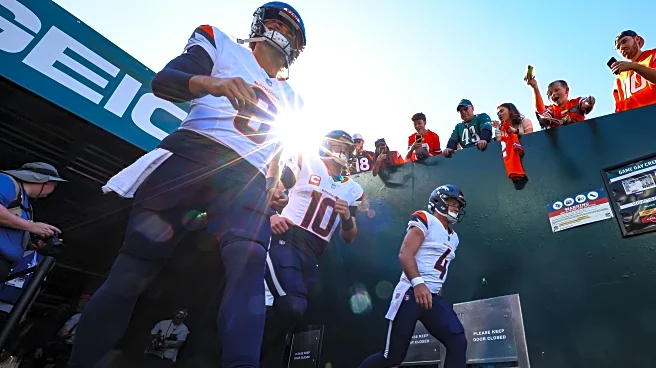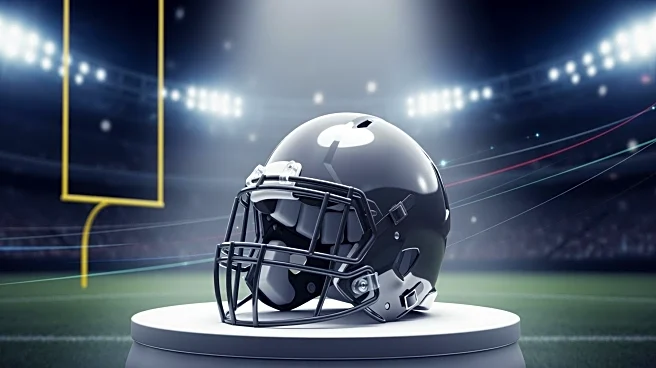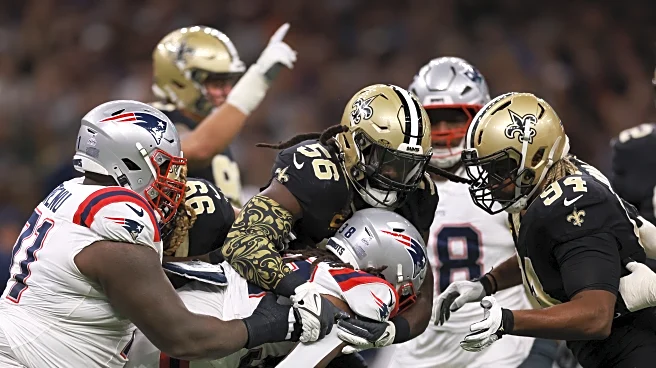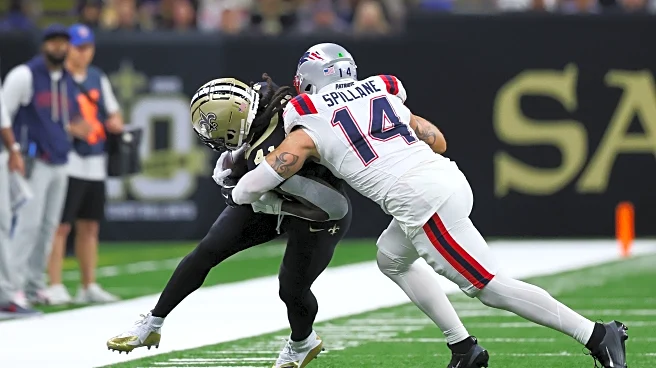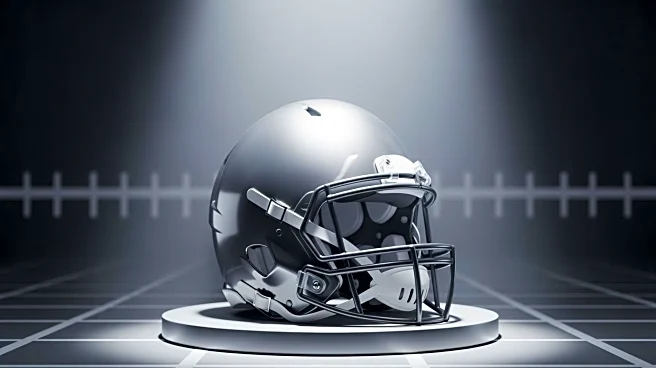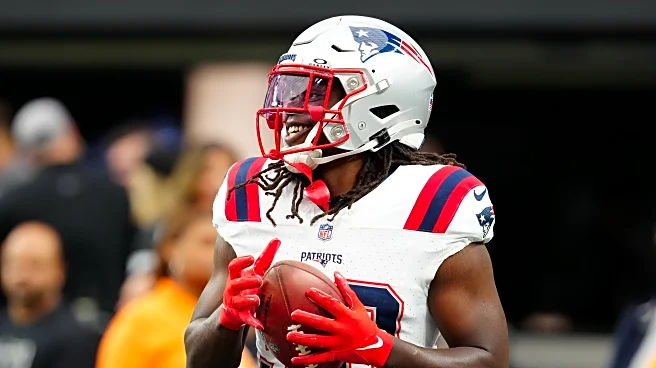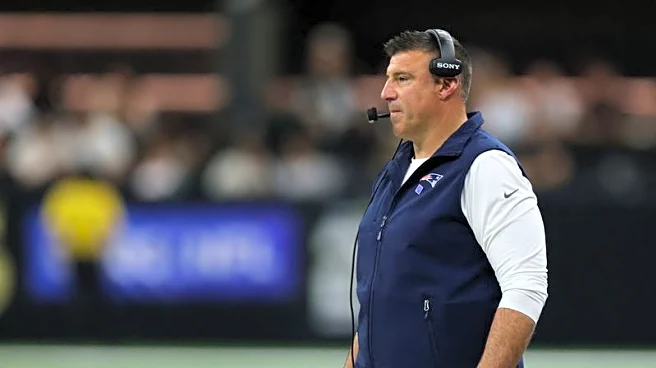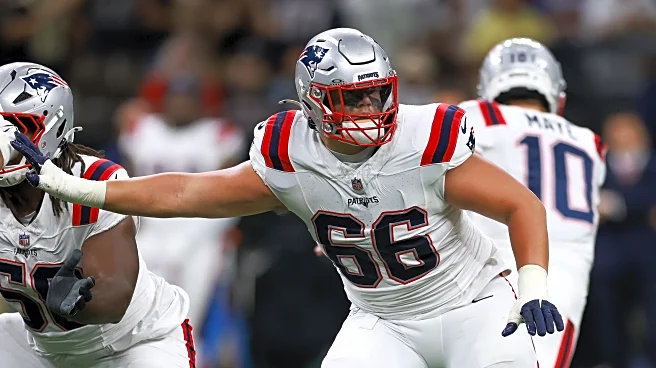Having won three games in a row, the New England Patriots are current co-owners of the longest win streak in the NFL. Their recent success has catapulted them to the top of the AFC East for the first time
in nearly four years, and also made them one of the hottest teams in all of football.
Are they really, though? Momentum definitely is on their side, there is no denying that, but a deeper dive into the numbers shows that there are also several areas of concern still.
That being said, as the following graphic illustrates, they are a fringe top-10 team at the moment.
 rbsdm.com" data-portal-copyright="rbsdm.com" />
rbsdm.com" data-portal-copyright="rbsdm.com" />
Considering the circumstances of a club under a new coaching staff, ranking in the vicinity of other playoff hopefuls at this point in time is nothing short of impressive. Offensively, the Patriots are right up there with some of the better teams in the NFL, whereas their defense has been playing well enough to keep them in contention on a week-to-week basis.
Let’s dive deeper into the statistics entering the upcoming Week 7 game against the Tennessee Titans.
For a more detailed explanation of the numbers presented in this breakdown, please click here.
Offense
Last year, the Patriots offense was among the worst in football across the board. This year, it is an entirely different story. While there are still areas of concern — more on those in a second — the unit has taken a major step forward, which in turn has been the catalyst between the team’s current surge.
There appear to be three main reasons why that is the case:
- Drake Maye’s development in his second year in the NFL
- Josh McDaniels replacing Alex Van Pelt as offensive coordinator
- Improved supporting cast particularly along the offensive line
Add it all up, and you get an above-average offense six games into the season. And given New England’s recent history, above average is a massive step forward.
The backbone of the Patriots’ offensive success is their passing game, which is one of the most productive and efficient in the NFL so far no matter the metric you like to use. What stands out, though, is that the unit’s overall success moving the ball through the air seems to be independent of their ability to pass block. While Drake Maye is playing from clean pockets on almost two thirds of his dropbacks, that number is ranked only 18th in the league.
A look at the adjusted sack rate and pass block win rate through six games further illustrates this. The pass blocking is much better than it was last year — in 2024, New England ranked dead-last with a clean pocket rate of 55.8% — but it still has room for improvement.
Even with his pass blocking not always up to par, Drake Maye has played some impressive football — to a point where he finds himself in the early MVP conversation. We had the debate about his top-10 status among NFL quarterbacks last week, but the numbers speak a clear language: based on the first six games, he is a top-10 passer from a statistical perspective.
The only number above that places him in the lower regions of the NFL, after all, is sacks taken (18). Obviously, those are not always entirely on the offensive line; some of his takedowns, for example, were scramble attempts stopped behind the line of scrimmage. Still, coupled with the other metrics introduced above, we can see that Maye makes the most of a situation not always entirely in his favor.
The Patriots’ running game has been rough, and the numbers show this as well: the unit is ranked at or near the bottom of the NFL in most categories, despite actually posting a solid run block win rate. But even with New England’s blockers holding on at a rate of 73 percent, there are issues up front as well as in the backfield itself.
The Patriots’ interior has been uneven in run blocking, while the backs themselves have also not been able to make much of the room they’ve been given. Maybe that is a result of inexperience (TreVeyon Henderson) or worries about putting the ball on the ground (Rhamondre Stevenson), but the bottom line is that the ground game has not held up its end of the bargain.
Defense
Welcome back, bend-but-don’t-break defense. You’ve been missed around these parts of the country.
References to the early 2010s Patriots aside, the team has indeed been able to limit the damage so far this season both in terms of overall points being given up and per-drive efficiency. Part of it has to do with limiting big plays, giving up field goals rather than touchdowns (especially outside the red area), and generating turnovers. Combined with the offensive success, that has gotten the job done so far.
The Patriots have not been able to quite maintain their hot start against the run, but the unit led by the likes of defensive tackles Christian Barmore and Milton Williams as well as linebacker Robert Spillane has still been very good. One number that stands out is yards after contact: at 1.4, New England is tied for best in the league.
Combine that with a step up in missed tackles — the team is now 22nd as opposed to its 31st ranking after Week 2 — and you get a solid run defense. That does not mean teams have not found success, especially attacking to the perimeter of the defense, but the unit is not one to worry about at the moment.
Even with standout cornerback Christian Gonzalez back in the fold since Week 4, the Patriots have not been able to play consistent pass defense so far this season — despite their pass rush performing at an OK level. However, teams have found success moving the ball particularly against zone looks (the 26th-ranked yards after catch per reception number is partially a result of that).
Whether to run more zone or man is oftentimes a game plan decision. Against dual-threat passers, playing zone to keep defenders from turning their back to the quarterback and thus opening up potential scramble lanes, makes sense. However, based on the talent available particularly in the secondary, incorporating more man than zone would make sense.
After six weeks, the Patriots have run man on just 46.9% of their coverage snaps.
